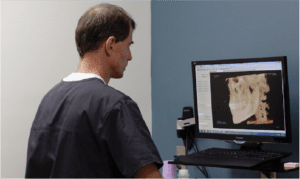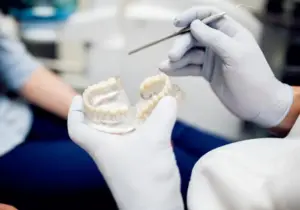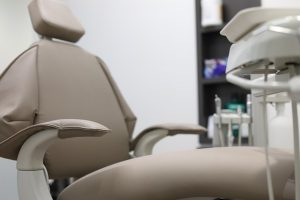What Exactly is a Dental Bone Graft?
Pretty much anytime we hear the words “bone graft,” unpleasant, painful procedures come to mind, even though many of us don’t know exactly how a bone graft works in the first place. And add “dental” to that term – sounds daunting, right? As a dental implant dentist who specializes in holistic tooth replacement, we get questions about dental bone grafts all the time. So let’s take a closer look at dental bone grafting in this post and shed some light on a really cool procedure that’s gotten a scary rap.
Dental bone grafting is just about how it sounds: it’s a surgical procedure designed to supplement lost bone in the jaw. The grafting material might be from the patient’s own body, a donor, or a substitute natural material. It’s done in order to restore the structural integrity of the jaw, usually in order to take a dental implant properly. Dental bone grafting is necessary in other situations too, though, like certain wisdom tooth extraction situations.
What Methods of Dental Bone Grafting are There?
There are a few reasons patients need dental bone grafts, and four main sources the grafting material comes from. All dental bone grafting includes adding a graft, and sometimes a helpful treatment like PRP therapy, that acts as scaffolding and encourages the jaw to build new, healthy bone in the affected area.
A Few Types of Dental Bone Grafts:
- Socket grafts: installed directly after a tooth is extracted in order to fill the void. It stops the socket from collapsing and the jaw bone from beginning to disintegrate in that area.
- Ridge grafts: usually done in preparation for dentures. It rebuilds the jaw ridge where there’s been bone loss from having missing teeth for years.
- Block bone graft: used when the front of the jaw is significantly deteriorated, usually by advanced gum disease. An oral surgeon takes boney material from the area where your wisdom teeth were to supplement the lost bone in the front of your jaw.
- Sinus lift grafts: used in patients who are missing upper molars. If you’re missing upper back teeth, your jaw degrades and your sinuses sink to where all the tooth roots were supposed to be. This makes it impossible for a dental implant dentist to safely install dental implants. A sinus lift dental bone graft helps your jaw rebuild the area and push the sinuses back up where they belong.
Four Sources for Dental Bone Grafting:
- Allografts: uses bone from a donor source – usually a cadaver. But! There’s also a cool new method of using donor teeth we’ve extracted from other patients, neutralizing them and grinding them down to a fine bone mixture we then use for dental bone grafting.
- Alloplasts: uses synthetic material like Bioglass.
- Autografts: uses bone from other places in your own body.
- Xenograft: uses bone from a biocompatible animal species – usually pig or cow.
Do I Need a Dental Bone Graft to get Dental Implants?
Your oral surgeon will do some x-rays to decide whether you’ll need dental bone grafting before you can have your tooth replacement procedure done, whether it’s dental implants, dental implant bridges, or dentures. In certain cases, a pediatric wisdom tooth bone graft is necessary after a wisdom tooth extraction. No matter the need, it’s a simple procedure. The healing time is long, but not the recovery time. You’ll find the discomfort goes away after a few days. But the dental bone graft likely won’t be finished doing its job for a couple months or more. Bone is the slowest type of tissue to grow, and the graft is just the scaffolding, so you’ve got to give your body time to use the dental bone graft to help itself truly rebuild healthy bone. This is definitely something important to consider if you need dental bone grafting before a dental implant; while same day dental implants are possible, they’re not all that common – it’s usually a months-long process. But it’s permanent, holistic tooth replacement, so in the end it’s totally worth it.
Do Dental Implant Dentists do Dental Bone Grafting?
Yes, dental implant dentists do dental bone grafting. After all, they wouldn’t exactly be able to do many dental implants without it. Dental bone grafting and dental implants often go hand-in-hand, especially if you’ve been missing that tooth for a long time or you lost it because of an illness that’s affected the health of your jaw. Dental implant dentists, oral surgeons and maxillofacial surgeons alike have the ability to install effective dental bone grafts that your body will easily accept. And most methods nowadays, like adding platelet-rich-plasma therapy to the procedure, can help even the most unhealthy bone stabilize itself. Main point? Even if your smile has been damaged for a long time, dental bone grafting has made it possible to rebuild your jaw so you can restore your smile to better than ever before.










